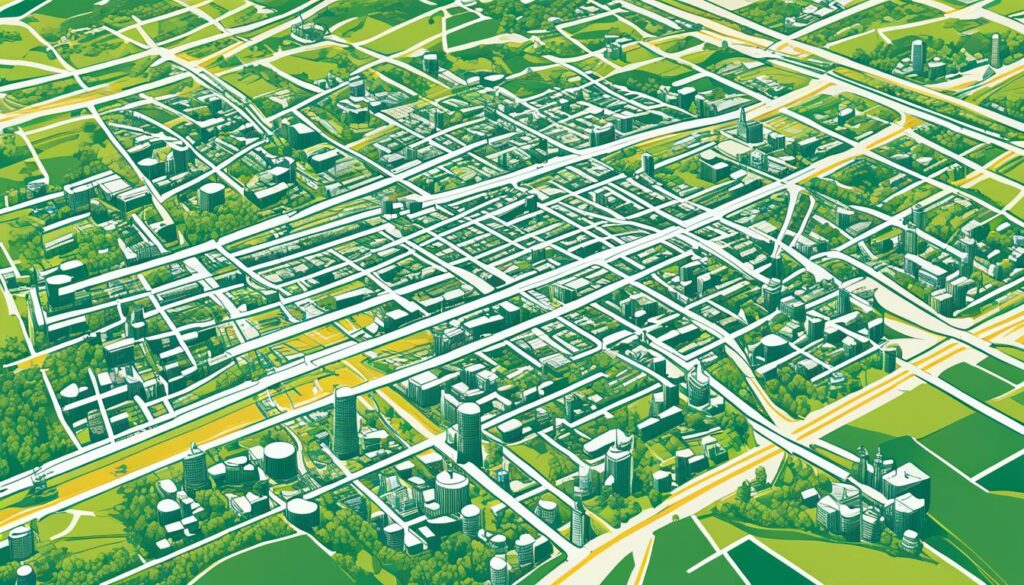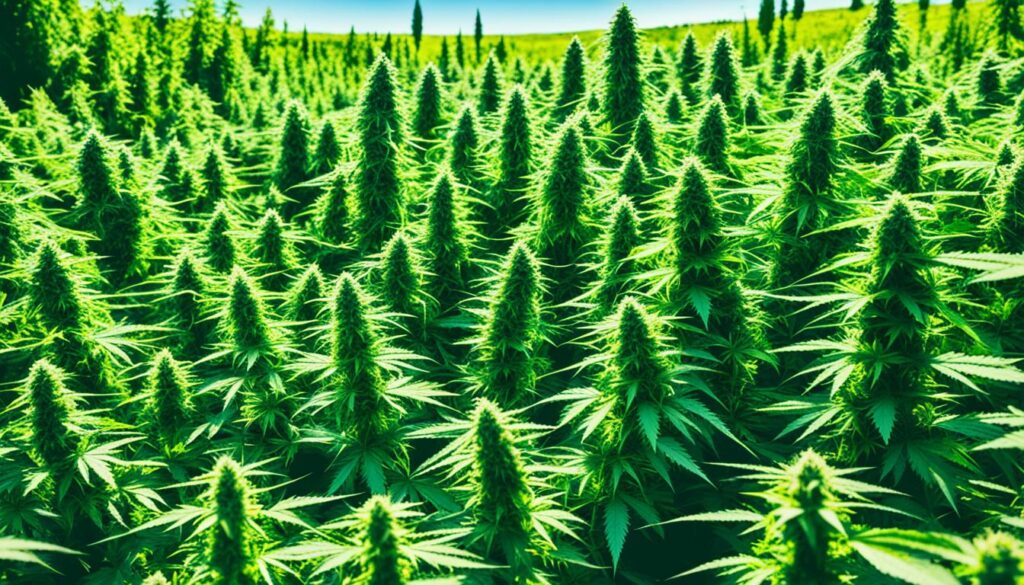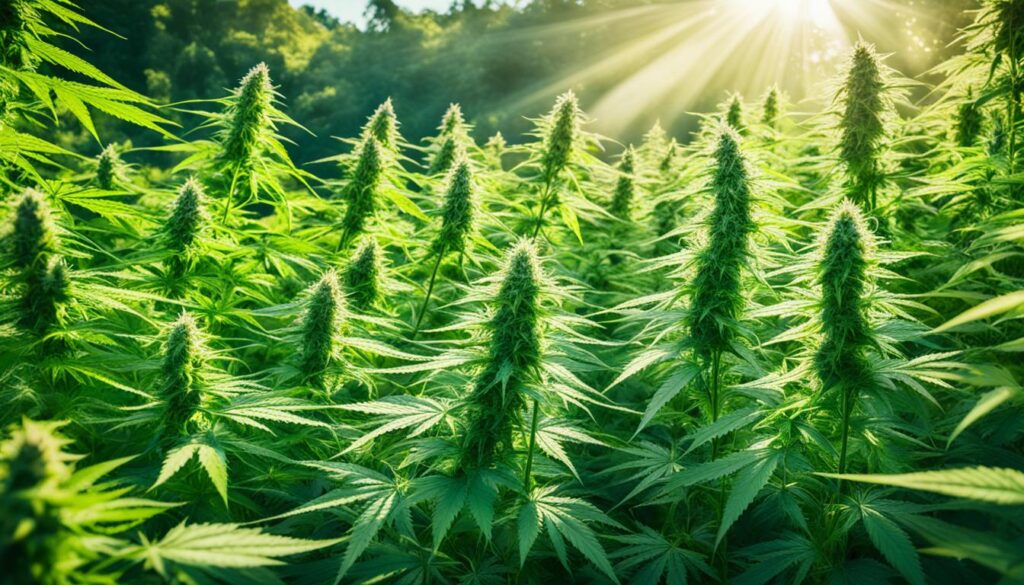In the heart of Cambodia, Takeo province is famous for its cannabis. It has a long history of growing and making weed. Now, it’s a hot spot for those who want to learn about the area’s marijuana scene.
Let’s explore the world of cannabis in Takeo together. We’ll look at the old ways of growing weed, the rise of illegal grows, and how it all moves through trade routes and networks. This is the story of Southeast Asia’s hidden weed trade.
Key Takeaways
- Takeo province in Cambodia has a long history of cannabis cultivation and production.
- The region has witnessed the emergence of illegal grow operations, contributing to the thriving underground marijuana industry.
- Intricate trade routes and distribution networks have facilitated the widespread distribution of weed in Takeo.
- Understanding the historical context and the current state of the marijuana scene in Takeo is crucial for navigating the complex legal landscape.
- Exploring the economic and social impacts of the weed trade in Takeo can provide valuable insights into the region’s ongoing challenges.
The Flourishing Marijuana Scene in Takeo Province
Takeo Province in Cambodia is known for its cannabis cultivation. For many years, farmers have grown marijuana using old ways. But, in the last few decades, there’s been a big increase in illegal grow operations.
Now, criminal groups have started big, secret marijuana plantations. They do this to meet the high demand for the drug.
Historical Cannabis Cultivation Practices
In Takeo, farmers have always grown cannabis for money. This has been a big part of their farming for a long time. They pick the best places to grow and take great care of their plants.
These historical cannabis practices help them grow lots of high-quality cannabis.
Emergence of Illegal Grow Operations
Recently, the marijuana farming in Takeo has gotten worse. Big, secret illegal grow operations have started. Criminals use the area’s cannabis cultivation skills and good weather to grow lots of marijuana.
These illegal grow operations have made the marijuana industry in Takeo very big. They have also made a big, secret economy.
“The cannabis cultivation practices in Takeo have been passed down through generations, reflecting the deep-rooted cultural significance of this crop in the region.”
weed in Takeo: A Thriving Underground Industry
The weed in Takeo has become a big deal, with secret cannabis trade routes and networks. Weed from Takeo goes to other countries and places in Cambodia. Criminal groups have made the weed trade big and organized.
Cannabis Trade Routes in Takeo
Takeo is near Vietnam and Thailand, making it key for drug trafficking in Southeast Asia. Weed from here goes to big cities in Cambodia and other countries. People want it a lot.
- Weed from Takeo goes to Vietnam, sold in the black market.
- It also goes to Thailand, through networks in the north.
- In Cambodia, it reaches cities like Phnom Penh and Sihanoukville.
These routes are protected by criminal groups. This makes it hard for police to stop the weed trade in Takeo.

“The weed trade in Takeo has become a lucrative underground economy, fueled by the province’s strategic location and the growing demand for marijuana in the region.”
Legal Implications and Risks
Marijuana in Takeo is in a legal gray area. This means big risks and implications. Cambodia has strict laws against growing, having, and moving cannabis. Those caught in the drug trade face arrest, court, and jail.
Even with the risks of the marijuana trade in Takeo, it’s a big place for illegal grows. Drug laws in Cambodia are tough. People caught with or moving cannabis face big punishments. The legal status of weed in Takeo makes things uncertain for those in the industry.
- Cambodian interest in organic farming was measured at 70% of interviewed farmers.
- 88% of 210 pesticide-using farmers experienced symptoms of poisoning.
- The direct cost of Cambodian pesticide use is estimated at US$7-20 million per year.
- Developing countries spend approximately US$3 billion annually on pesticides, with one-third (US$900 million) not meeting international quality standards.
Bad use of pesticides in Cambodia hurts food safety, health, exports, and tourism. It also makes pests resistant to pesticides, leading farmers to use more. Western companies don’t do enough to teach safe use. This use is risky for people, the planet, and the economy.
“Over one million Americans are legally using medical marijuana, with nearly half of the country living in states where this treatment option is available. As of July 2014, 23 states and the District of Columbia have laws allowing the use of cannabis under a doctor’s supervision. Federal law prohibits the prescription of cannabis but permits recommending its therapeutic use without legal jeopardy.”
The rules around weed in Takeo are complex and changing. Even though it’s a big place for illegal grows, the legal issues with the marijuana trade are big worries for those in it. With drug laws in Cambodia being strict, the risks of the marijuana trade in Takeo stay high. This makes the situation uncertain and risky for everyone in the industry.
Impacts on Local Communities
The marijuana trade in Takeo has big effects, both good and bad, on local communities. It has given some people jobs and money. But, it’s illegal, leading to more crime, violence, and addiction.
Economic Effects of the Marijuana Trade
Some folks in Takeo have found work in the weed trade. This has helped them support their families and live better. But, the trade’s illegal status has also created a shadow economy. This has hurt traditional jobs and made the economy unstable.
Social Consequences of Drug Production
The weed trade has hurt the social life in Takeo. It has caused more crime, violence, and addiction. This has made life less safe and well for the people living there. Families and individuals are finding it hard to deal with the drug industry’s effects.
| Positive Impacts | Negative Impacts |
|---|---|
|
|
The weed trade in Takeo shows us how complex this issue is. It has good and bad sides. We need to think about this carefully when making decisions.

Conclusion
The cannabis culture in Takeo province is complex and has a long history. It has a thriving underground industry and big legal and social issues. The area is known for growing cannabis, but illegal grows and drug trade are big problems now.
Cambodia faces big challenges with the marijuana industry. It must balance making money with keeping people safe and following the law. We need a deep look at the weed in Takeo to find a lasting solution that helps the people.
The story of cannabis in Takeo shows it’s a tough issue. We need a plan that looks at history, money, and social things. By tackling these problems, Cambodia can make the most of its land. This will help its people and make the country more stable.

As a veteran weed smoker for over 30 years and been very clean for the last 3 years, I have been craving it.
One thing I’ve never done is consume it?
I came across SunJet Plug and thought mmmm how esp with legalities etc.
So I made the plunge and purchased 12 brownies, well within 30 mins it kicked in and it was immense as I had a whole one from the off 😜
The rest did not last a week I was having 2 a day and my wife lost me for a few days I was in my own world apparently.
Kudos to the Sunjet plug love em, the taste is a bit undesirable could do with a tweak or two other than that no complaints
Contact him on his telegram link: t.me/sunjetplug
His email : sunjetplug@gmail.com
Many many thanks.😁
Take note ,he does not have telegram channels
Sunjet plug is 100% legit.. I’m a repeat customer.. I’ve ordered 10+ times now, and I’ve never had an issue.. Great product, great service.
Sunjet plug is extremely trust worthy , they never fail in what ever product I order, and its always in my hands with an hour of ordering 99% of the time….. its honestly rare when its more than 2 hours and that’s only because its the weekend when ive orded or a national holiday is on or something lol …. brilliant service I’m probably pushing maybe 2 months with them and I’ve never been disappointed ❤️ my only recommendation would maybe do a stamp card to get something free after 5 orders or a loyalty bonus of some kind ❤️
Email sunjet.. sunjetplug@gmail.com